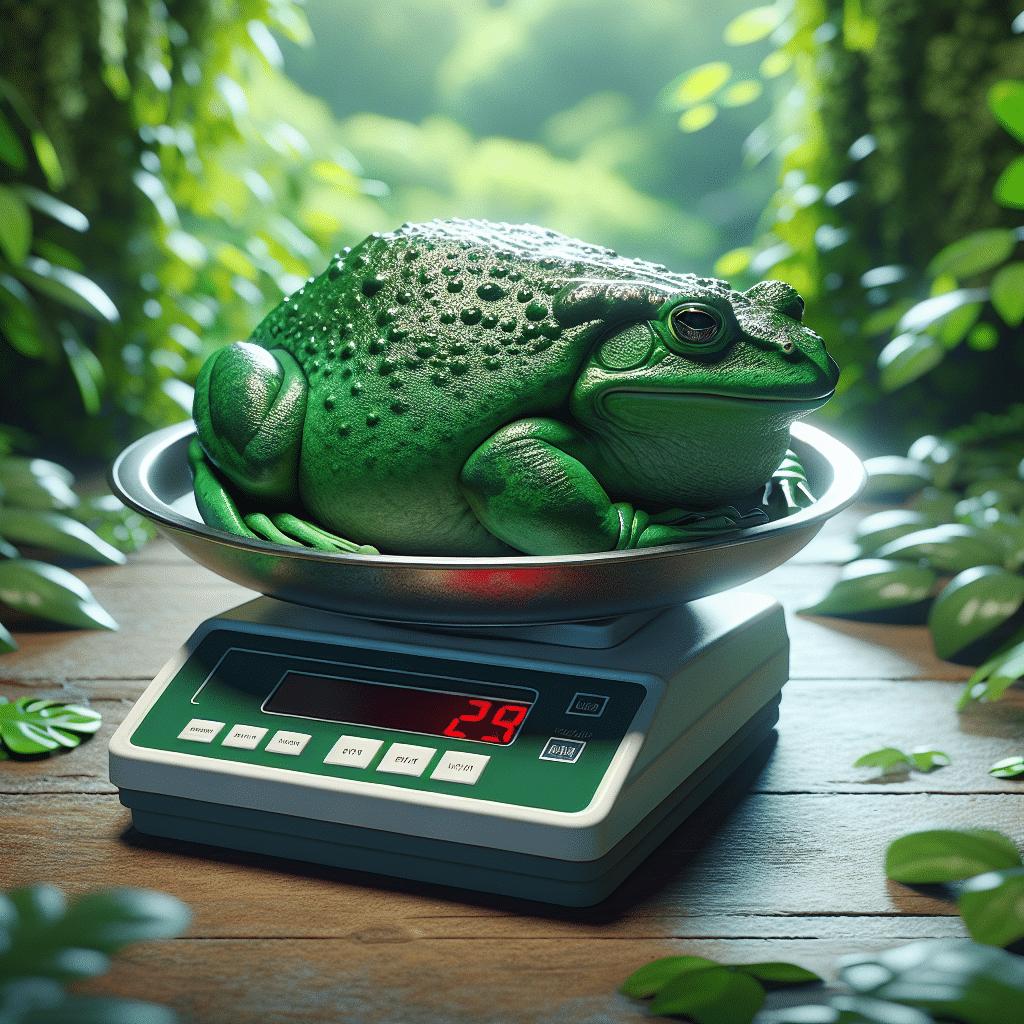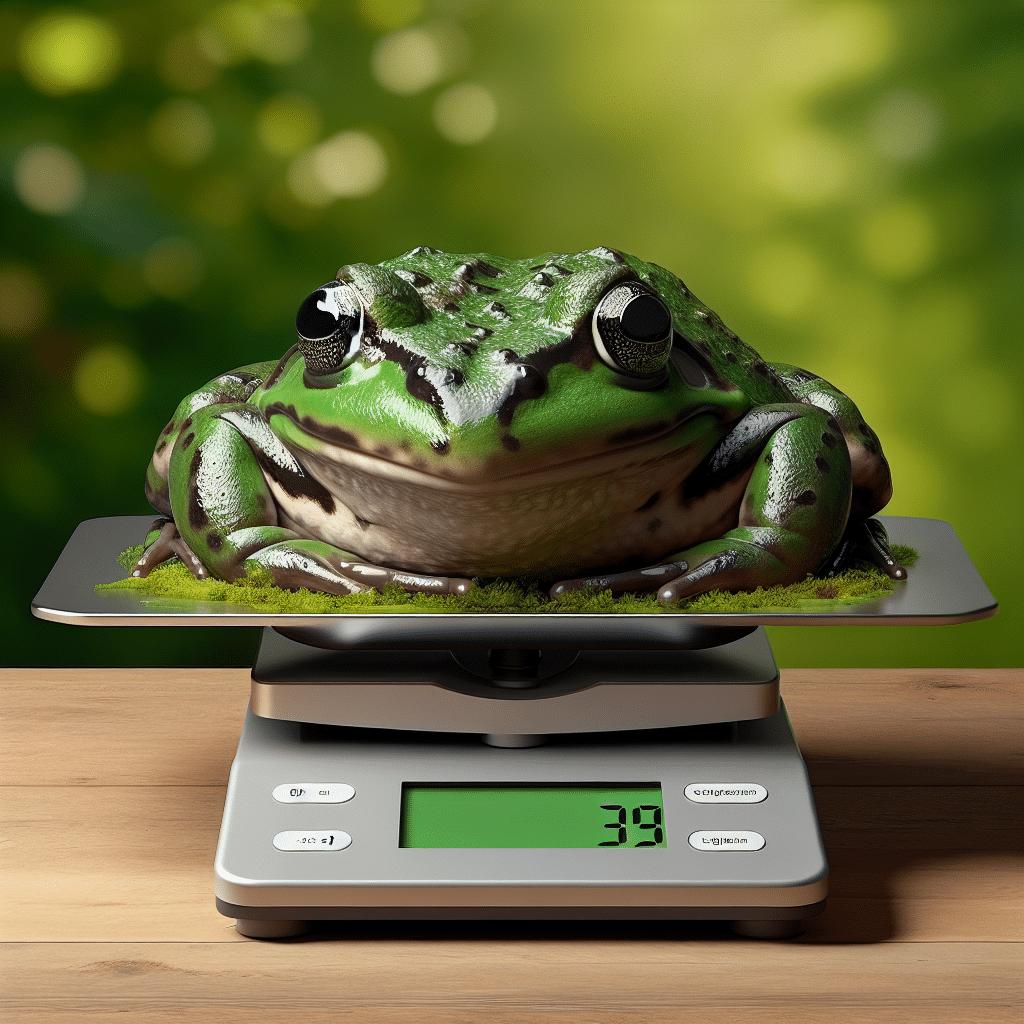Imagine you’re holding a small, slimy friend in your hand—a frog. Have you ever wondered just how much these little jumpers weigh? The mass of frogs might surprise you, considering their powerful leaps and diverse sizes. From dainty tree frogs that barely tip the scales to hefty bullfrogs that might give your poor kitchen scale a moment of dread, every frog species carries its own unique heft. Let’s hop into the fascinating world of frogs and uncover the weighty secrets they hide beneath their jump-ready legs.

Overview of Frog Species
Diversity of frog species
You probably know that frogs are incredibly diverse, but did you realize there are over 7,000 species of them? Frogs are found in almost every corner of the world, from the tropical rainforests of South America to the arid deserts of Australia. They come in a mind-boggling spectrum of sizes, colors, and shapes, each adapted to their unique niches in the ecosystem.
Geographic distribution of frogs
Frogs have conquered an array of habitats. You can spot them lounging by calm forest creeks, clinging to tree branches, or, less commonly, surviving in more urban landscapes. Geographic distribution plays a significant role in the diversity of the species. For instance, the rainy tropics harbor a vast array of species, each with distinct behaviors and adaptations that suit the warm, moist environment.
Implications of size and weight variation
The size and weight of frogs are not just fun trivia facts. They have significant implications for their survival, reproductive strategies, and even how they move. From the hefty Goliath frog, which can weigh as much as a domestic cat, to the minuscule Paedophryne amauensis, weighing barely more than a paperclip, these variations influence how frogs interact with their world and each other.
Determinants of Frog Weight
Genetics and weight potential
Just like in humans, the genetics of a frog play a major role in determining its potential for weight and size. Each species has its own genetic blueprint that guides its growth, but individual variance still exists. This is why some frogs might be larger or smaller than others of their own kind.
Environmental factors influencing growth
You know that the environment you grow up in impacts your health and growth, right? Well, it’s the same for frogs. Factors like temperature, humidity, and habitat quality can greatly influence a frog’s growth rate and final weight. A frog living in a nutrient-rich environment with plentiful food will usually grow larger than one in a less hospitable setting.
Dietary impact on weight
You are what you eat, and this couldn’t be truer for frogs. Their diet, rich in insects, worms, and whatever else they can snag with their sticky tongues, directly affects their weight. A readily available food supply will often lead to heftier frogs, as opposed to those in areas where food is scarce.

Measuring the Weight of Frogs
Methods of weighing frogs
So, how do scientists weigh these hoppy creatures? They use sensitive scales that can detect even the slightest weight. Frogs are typically placed in a container to keep them still, which is then placed on the scale. The weight of the container is subtracted from the total measurement for an accurate weight of the frog alone.
Challenges in obtaining accurate measurements
But, grabbing that weight is trickier than it sounds. Frogs are notoriously wiggly and some species secrete mucus, which can add extra weight. Moreover, being ectothermic, their body mass can fluctuate with temperature. All these factors need to be taken into account for an accurate reading.
Standard units of weight for frogs
Scientists usually report frog weights in grams, as many frogs are quite light. For larger species, where weight might be measured in kilograms, the same units used for weighing most animals apply. Consistency is key when comparing data across studies and species.
Average Weights by Species
Common frog species and their weights
Let’s dive into some specifics, shall we? The common green frog from your backyard pond weighs around 22 to 80 grams, depending on a variety of factors, including sex and age. When you think of a “typical” frog weight, these guys might come to mind.
Largest and smallest frog species
On the heavier end of the scale sits the Goliath frog, tipping the scales at up to 3.3 kilograms. That’s quite hefty for a frog! On the flip side, we have the diminutive Paedophryne amauensis, believed to be the world’s smallest frog, with an average weight of just 0.3 grams. It’s so light that you could have several on a spoon and barely notice!
Weight ranges within a single species
Variability is common within any species. Take the American bullfrog as an example. They have a weight range typically between 100 and 500 grams. Factors like location, sex, and individual health can make all the difference in where a frog falls within that range.

The Influence of Age and Maturity
Weight comparison between tadpoles and adult frogs
Remember watching tadpoles in a pond and marveling at their transformation into frogs? As tadpoles shift from water-bound larvae to land-dwelling adults, their weight changes drastically. An adult frog will almost always weigh more than it did as a tadpole, thanks to developing limbs and body mass.
Impact of metamorphosis on weight
Metamorphosis is like a total body makeover. Organs reshape, tails disappear, and limbs grow. This complex process involves significant changes in body composition and, hence, weight. It’s one of nature’s most extraordinary weight transformation stories.
Age-related weight gain patterns
In frogs, as in other animals, weight often correlates with age. Younger, immature frogs weigh less than their fully-grown counterparts. As frogs age, their weight gain patterns follow their development until they reach their mature size, which they maintain throughout adulthood.
Sexual Dimorphism in Weight
Weight differences between male and female frogs
In many frog species, there’s a noticeable weight difference between males and females, a phenomenon known as sexual dimorphism. Usually, it’s the females that are larger, particularly during the breeding season when they’re gravid, carrying eggs.
Reproductive roles and their impact on weight
The reproductive roles of frogs add another layer to the weight story. Females, often carrying the burden of producing eggs, may have greater body mass due to their reproductive organs and the eggs themselves.
Examples of sexual dimorphism in various species
Consider the African bullfrog: the male can weigh more than double the female, bucking the trend of larger females. Conversely, for the common Suriname toad, females significantly outweigh the males. It’s this kind of diversity that keeps herpetologists busy and fascinated.



